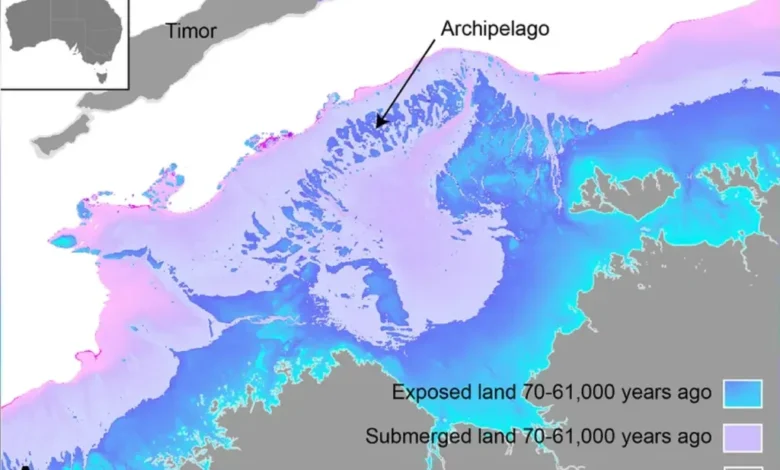Lost continent roughly twice the size of UK discovered off the coast of Australia
The study's calculations indicate that the continent might have sustained between 50,000 and 500,000 people.

A long-lost continent about twice the size of the United Kingdom has been located off the northern coast of Australia. The huge continent was home to up to half a million people some 70,000 years ago, but it is now buried at a depth of approximately 100 metres. According to Live Science, this Australian “Atlantis” was a huge stretch of continental shelf that, when above sea level, would have linked the districts of Kimberley and Arnhem Land, which are now divided by a massive ocean bay.
Kasih Norman, an archaeologist at Griffith University in Queensland, Australia, and principal author of the study, stated, ”We reveal details of the complex landscape that existed on the North West Shelf of Australia. It was unlike any landscape found on our continent today.”
According to a research published in the journal Quaternary Science Reviews, the individuals who lived there spoke comparable languages and created similar forms of rock art as those who lived nearby. According to the research, it was a “vast, habitable realm” and a “single cultural zone” that had parallels in ground stone-axe technology, rock art styles, and languages.
The study’s calculations indicate that the continent or huge archipelago off the northwest coast of Sahul might have sustained between 50,000 and 500,000 people. Sahul, the ancient land bridge, included not only Australia, but also New Guinea and Tasmania.
To reach these results, the researchers projected historical sea levels onto high-resolution images of the ocean floor. They discovered that low sea levels revealed a large archipelago of islands on Sahul’s Northwest Shelf, reaching 500 kilometres to the Indonesian island of Timor.
“Our ecological modelling reveals the now-drowned North West Shelf could have supported between 50,000 and 500,000 people at various times over the last 65,000 years. The population would have peaked at the height of the last ice age about 20,000 years ago when the entire shelf was dry land. Many large islands off Australia’s coast – islands that once formed part of the continental shelves – show signs of occupation before sea levels rose,” according to the research. However, by the end of the Ice Age, rising sea levels had submerged the shelf, forcing its inhabitants to evacuate.
According to the study, ”Retreating populations would have been forced together as available land shrank. Rising sea levels and the drowning of the landscape is also recorded in the oral histories of First Nations people from all around the coastal margin.”
You might also be interested in-World’s tallest Ram temple will be built in Australia’s Perth at a height of 721 feet



